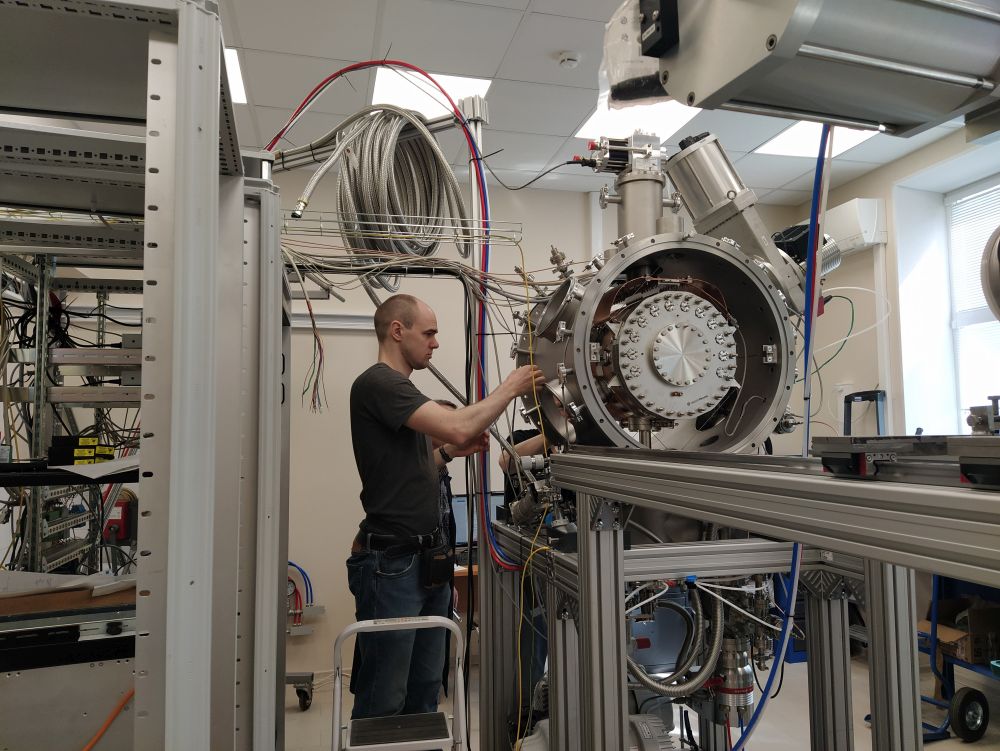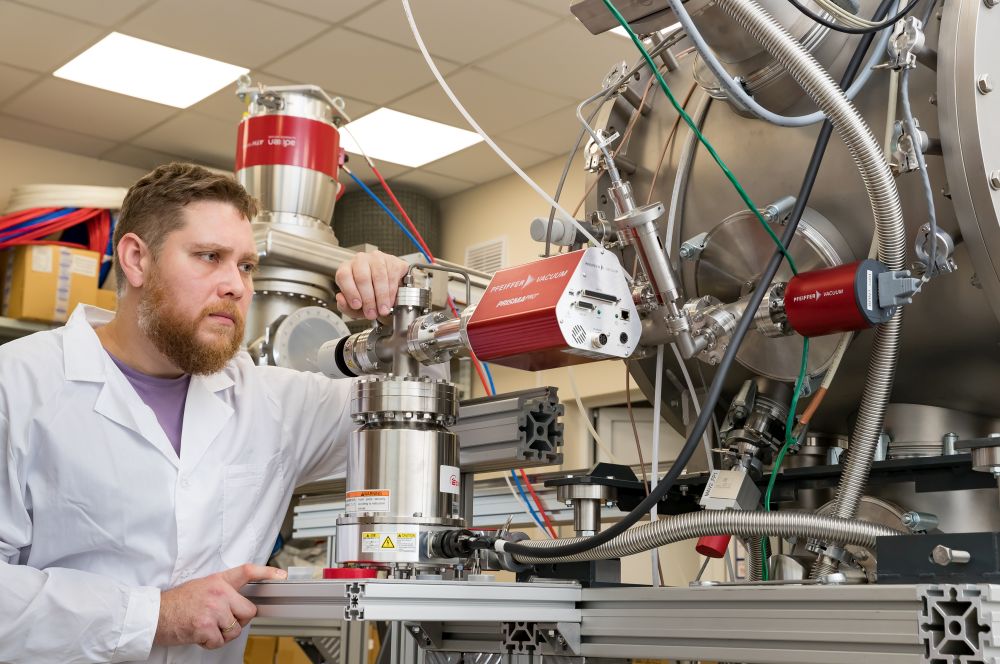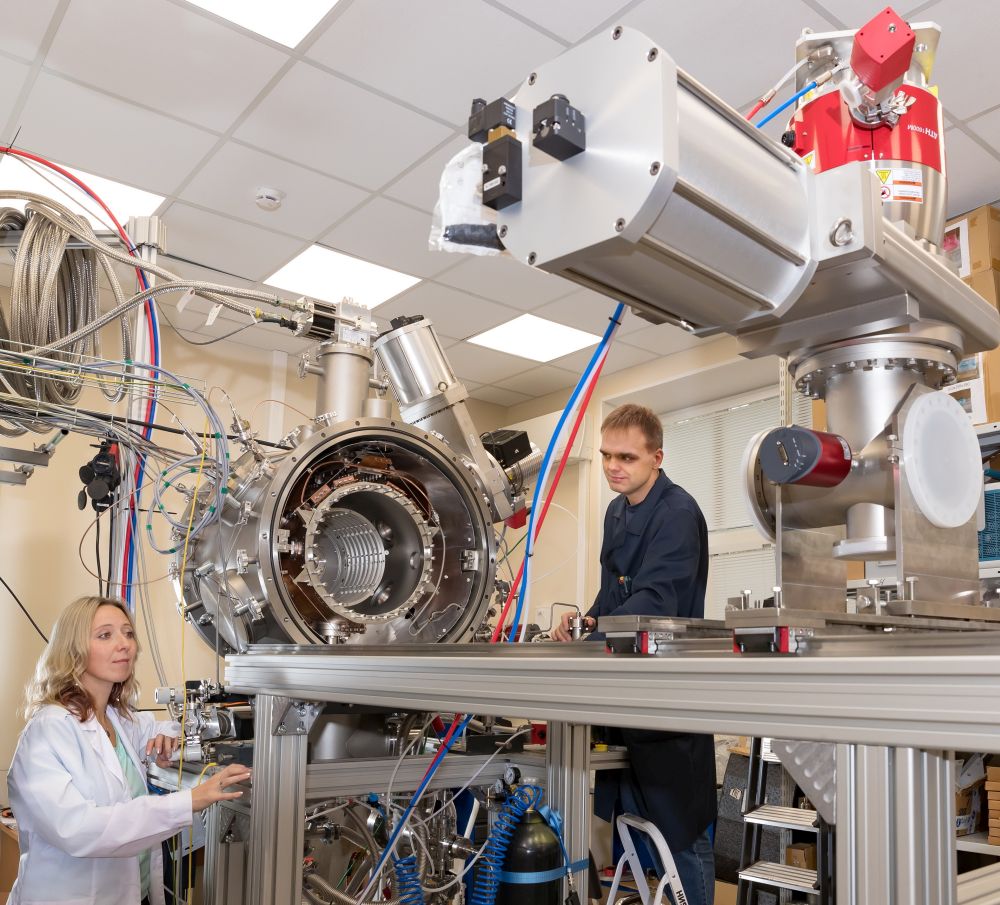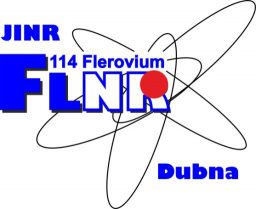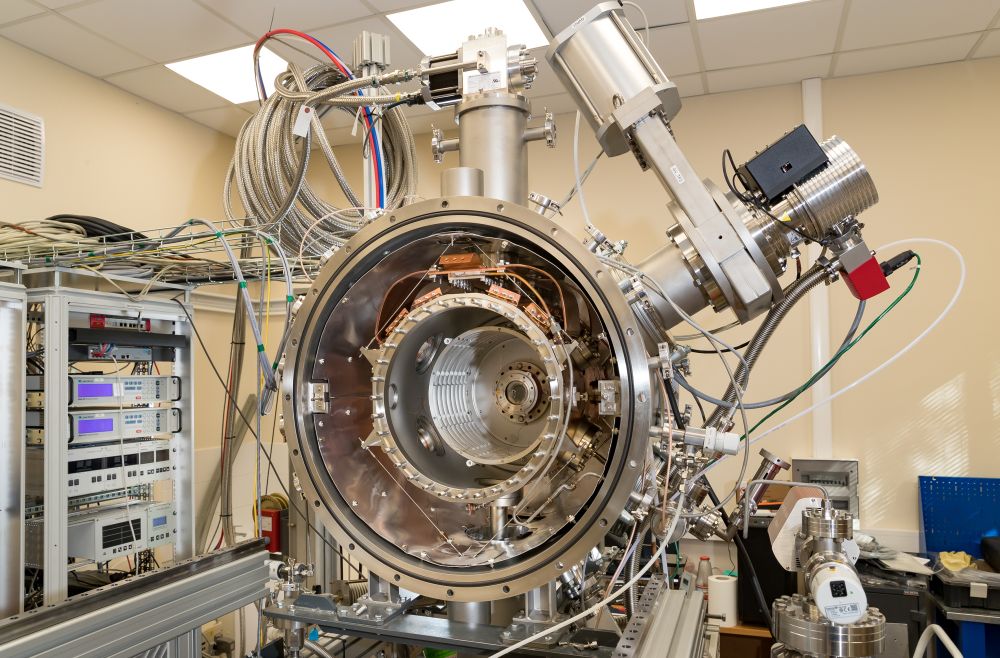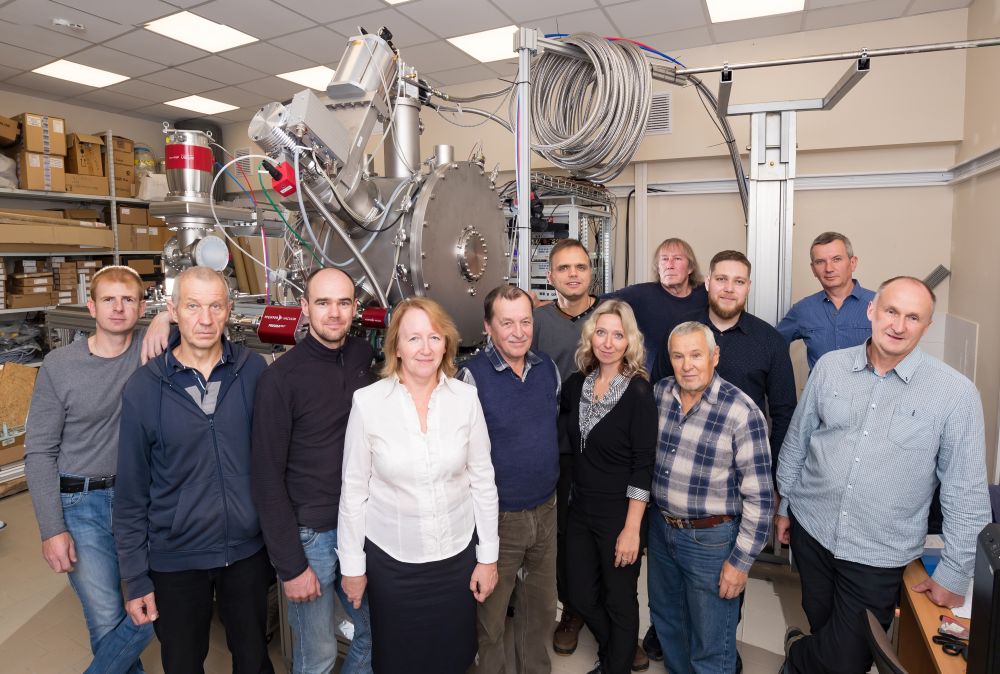New cryogenic gas-filled ion catcher has been created at FLNR
The cryogenic gas-filled ion catcher of a new type has been developed at FLNR, the special feature of which is its versatility. The device is designed for cooling and separation of nuclear reaction products and for their subsequent analysis. Such a catcher serves as a key element of the new FLNR setup for precision, that is of high-accuracy, measurement of the masses of nuclei of heavy and superheavy elements. The construction is being bench tested now. In the future new equipment will help JINR scientists in studying the physical and chemical properties of superheavy elements of Mendeleev Table.
Such catchers have become widespread in experimental nuclear physics and radiochemistry in recent decades due to their relatively short time of separation and high efficiency. The nuclei formed in the target have high energy, several tens of MeV, and it’s impossible to analyze them at such energies.
Gas catcher principle of operation is rather simple. The nuclei resulting from the reactions, previously slowed down by a solid-state absorber (if necessary) are inhibited in a helium-filled gas cell. The pressure in the gas cell depends on the energy of the secondary beams and can vary from 100 to 1000 mbar.During inhibition and recombination only one- and two-charge ions remain in helium. By some direct accelerating electrical voltage applied to the ring electrodes and directed along the cell axes, the ions are released into vacuum in the form of a beam through a supersonic nozzle installed at the end of the cell. Radio frequency voltage is applied simultaneously to the electrodes of the cylindrical and conical parts of the cell to prevent ions from reaching the electrodes. Further formation of the beam is realized using a regular electrostatic or radio frequency structure located in a vacuum volume where the ions are carried by a supersonic flow of a buffer gas. This technique results in a low energy beam with a thermal spread and an emittance less than 3π·mm·mrad, which creates the ideal conditions for mass spectrometric analysis.
Cryogenic gas-filled ion catcher has been manufactured, assembled and is already being bench tested at FLNR. The catcher is a key element of the setup for precision measurements of nucleus masses of heavy and superheavy elements and will operate together with the multireflective time-of-flight mass spectrometer, the so called MR-TOF-MS.
This catcher can be installed at the new FLNR accelerator and with its help it will be possible to measure accurately the masses of isotopes. The precision measurement of mass makes it possible to determine the total binding energy of a nucleus – an integral characteristic of all atomic and nuclear forces, which can become the key to solving fundamental physics problems in both the micro- and macrocosm.
The advantage of this catcher is that, firstly there is no dependence on chemical and physical properties of nuclides, beams of which are formed in the catcher. Secondly, significantly shorter extraction time (on the order of tens of milliseconds) compared to a solid or liquid absorbent (seconds). Thirdly there is no need for a special ion source. And finally, potentially higher efficiency in converting a flow of heavy ion reaction products at energies of 5-10MeV/nucleon into a low-energy beam (up to 40%).
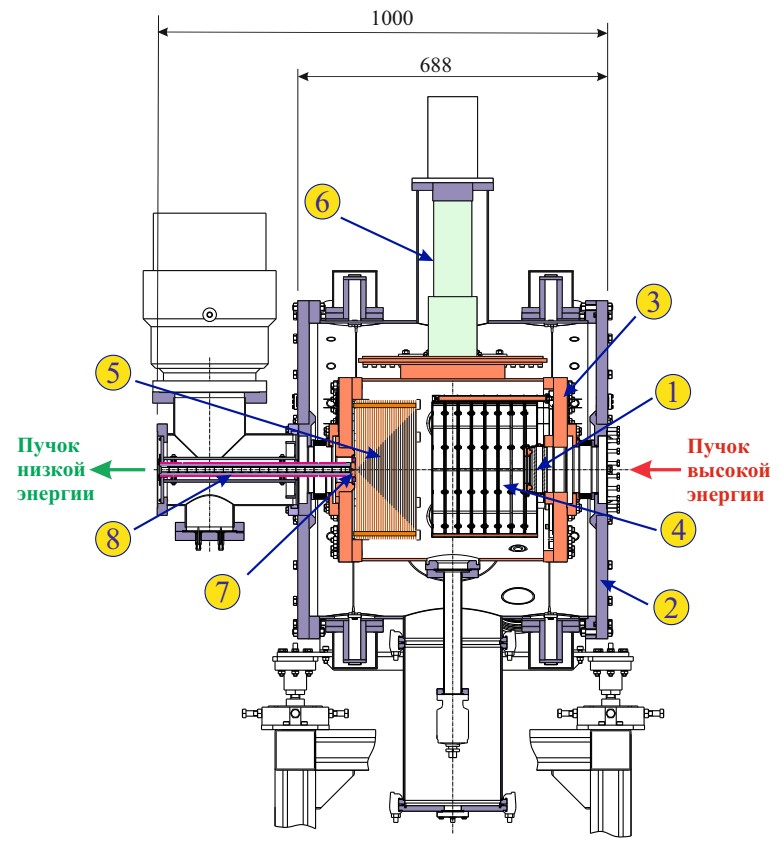
General view of the cryogenic gas-filled ion catcher. Positions in the picture: 1 – entrance window; 2 – outer warm vacuum shell; 3 – inner cold chamber; 4 – cylindrical electrodes of a constant electrical field; 5 – radio frequency multielectrode cone; 6 – head part of the cryocooler; 7 – supersonic nozzle; 8 – transport radio frequency quadrupole
Cryogenic gas-filled ion catcher consists of two vacuum chambers, coaxially-embedded into one another (by “thermos” principle). The vacuum gap between chambers creates good thermal insulation. Outer chamber (warm) has inside a reflective covering to reduce radiant heat load. The inner, cold, chamber is coated with a layer of copper for better temperature distribution. The operating gas is pumped through it – 99,99999% superpurity helium, it doesn’t react with projectile nuclei but slows down the movement of the latter with multiple collisions with them. The catcher must be cooled to low temperatures, about 40 K (-233,1 °С) to freeze out the residual gas and organic compounds.
Main parameters of the cryogenic gas-filled ion catcher
- The length of the cool gas cell is 300 mm
- Diameter is 250mm
- Operating gas temperature is T = 40K
- Gas pressure at operating temperature is 5-7 m bar
- Efficiency of inhibition of ions with energies ~ 0,1 MeV/nucleon in a cell ≥ 70 %
- The maximum gas flow from the cell is 10 Torr∙h/p
- Extraction efficiency ~ 30 %
- Extraction time ~ 25 ms
Charged ions passing through the chamber are slowed down and practically stop approximately in the center of the chamber. Then they are affected by the force of electrostatic field of the multielectrode system. Additionally they are moving due to gas movement. Then helium gas with practically “frozen” ions exits through the Laval nozzle in the form of a supersonic jet to the differential pumping chamber, and ions are moving along the transport quadrupole to the analysis and recording system. The big advantage is that the ions don’t recombine completely but only fill part of electron shell in such a way that only ions with charge numbers +1 and +2 remain. This advantage makes it possible to avoid the need for additional ionisation.
Currently the setup up is prepared for the complex tests the purpose of which is to measure such key parameters as time and efficiency of extraction of ions inhibited in the gas cell. The first experiment with it could be carried out as early as next year.

